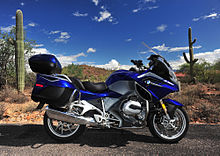2016 BMW 7-series Revealed: Ultra-Plush and Gadget-Stuffed
Always more limo than sports sedan, the BMW 7-series burnishes both sides of its personality with the all-new sixth generation, which arrives this fall as a 2016 model. The new 7 slims down thanks to a new platform that includes structural carbon-fiber elements, while at the same time turning up the luxury quotient and the techno wizardry. It will take a sharp-eyed observer, however, to identify the new, sixth-generation 7-series once the car starts gliding off dealer lots. Dimensionally very close to its predecessor, the 7-series in its latest iteration grows just over an inch in length, while its width and height remain largely unchanged. Largely unchanged could also describe the styling, which is at most a measured evolution. The car’s shoulder-line crease now continues forward through the headlamp cluster—with its familiar LED eyebrow—and into the twin-kidney grille (which hides active shutters to aid fuel economy), while in back it extends rearward into the more complexly shaped taillamps. There’s also a new, hockey-stick-shaped design element along the lower body sides. The net effect is to take another baby step away from the leaden, dumpling-like form language introduced with the Bangle-era 7-series of 2002.
Carbon Core, Not Common Core
Beneath the conservative exterior, however, the new 7-series platform contains some major changes. What BMW is calling its “Carbon Core” structure (with a badge to that effect on the B-pillar) is in fact a mix of carbon-reinforced plastic, aluminum, and high-strength steel. The carbon fiber is used in key areas such as the A-, B-, and C-pillars, the windshield header, and the transmission tunnel. Molded-plastic front fenders and an aluminum trunk and door skins shave additional weight. The company says that as much as 190 pounds have been trimmed, with unsprung mass down by 15 percent—the weight that remains is balanced nearly equally among the front and rear tires.In addition to trimming pounds, the new car also trims its model lineup. Whereas the past few generations of the 7 have been offered in standard- and long-wheelbase variants, BMW will bring the new car to our market only in LWB form, following in the tracks of its top rival, the Mercedes-Benz S-class. BMW is therefore ditching the “L” designation (although it will remain on the cars sold in Europe, where SWB models also will be offered).
Besides the elimination of the short-wheelbase variants, the model count is being further trimmed to just two core variants: six-cylinder 740i and V-8 750i. Although the 740i at launch this fall will be offered only with rear-wheel drive, an all-wheel-drive xDrive version will follow within a few months; conversely, the 750i will come first as an xDrive, with a rear-drive sibling following shortly after.
Left at the curb are the twelve-cylinder 760, the ActiveHybrid 7, and the Alpina B7 models. Although BMW isn’t saying, we expect the V-12 and the Alpina B7 to reappear eventually. A diesel is also a possibility at some point. A new plug-in will carry the hybrid banner. The six and V-8 in the 740i and 750i are familiar. The six-cylinder is again a 3.0-liter turbo, although it is part of BMW’s new, modular engine family. Output is 320 horsepower and 330 lb-ft of torque, which enables the 740i to sprint from zero to 60 mph in 5.4 seconds, according to BMW. The 4.4-liter V-8 with two turbochargers spins out 445 horsepower and 480 lb-ft, cutting the zero-to-60 run to a factory-estimated 4.3 seconds. As before, a ZF eight-speed automatic shuffles the gears for you.
Besides the elimination of the short-wheelbase variants, the model count is being further trimmed to just two core variants: six-cylinder 740i and V-8 750i. Although the 740i at launch this fall will be offered only with rear-wheel drive, an all-wheel-drive xDrive version will follow within a few months; conversely, the 750i will come first as an xDrive, with a rear-drive sibling following shortly after.
Left at the curb are the twelve-cylinder 760, the ActiveHybrid 7, and the Alpina B7 models. Although BMW isn’t saying, we expect the V-12 and the Alpina B7 to reappear eventually. A diesel is also a possibility at some point. A new plug-in will carry the hybrid banner. The six and V-8 in the 740i and 750i are familiar. The six-cylinder is again a 3.0-liter turbo, although it is part of BMW’s new, modular engine family. Output is 320 horsepower and 330 lb-ft of torque, which enables the 740i to sprint from zero to 60 mph in 5.4 seconds, according to BMW. The 4.4-liter V-8 with two turbochargers spins out 445 horsepower and 480 lb-ft, cutting the zero-to-60 run to a factory-estimated 4.3 seconds. As before, a ZF eight-speed automatic shuffles the gears for you.















